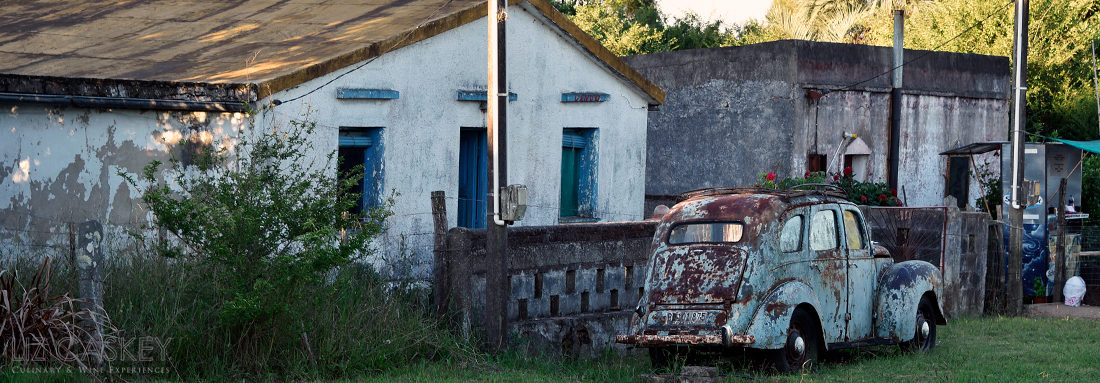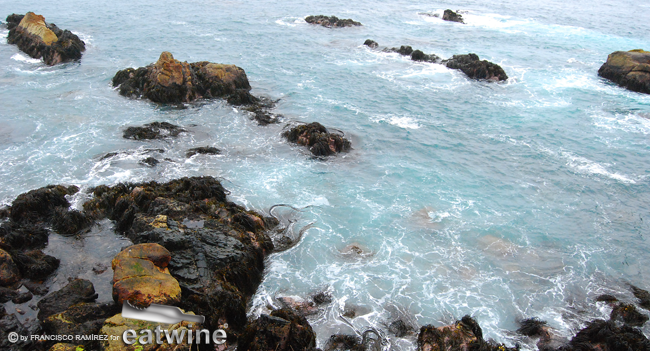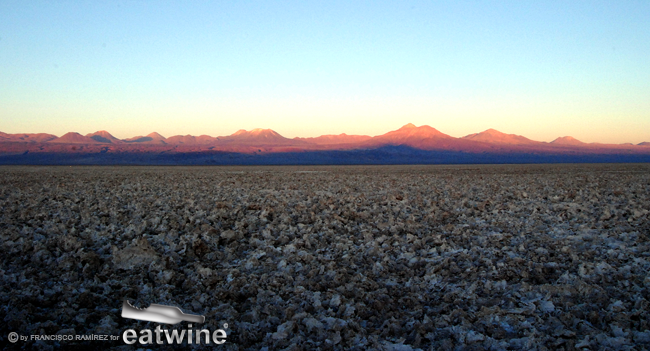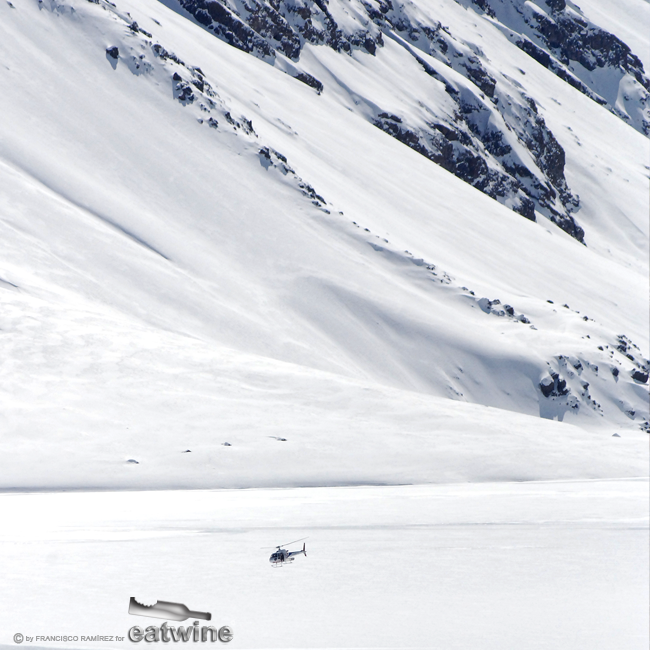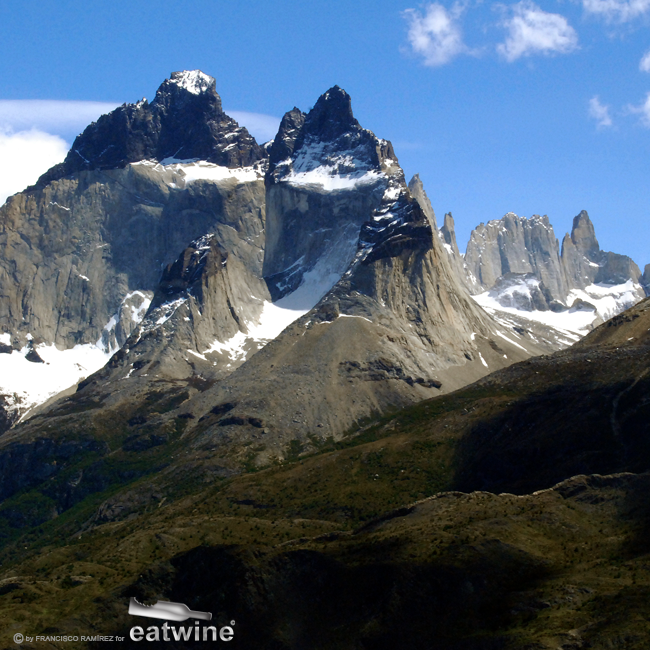Not too long ago, I found a map in our library entitled, “La carte gastronomique de la France” by Andre Bourguignon. It was forgotten among old Martha Stewart Living magazines. I have no idea how I got a hold of this map, but a probable lead is from my mother (lover of French food) who may have deposited it into my magazine stash at some point. It’s a poster-sized map of France divided into provinces and main cities. However, instead of naming only geographic characteristics, it highlights the culinary products of each place: typical dishes, fish, meats, wines, cheeses, preparations, recipes. If you blank suddenly on where to find la truffe noir, just look on the map (it may take a little scouring) and you’ll find it in the northwest corner of Provence. Similarly, all the coastal towns name the Mediterranean seafood, the foie gras in Gascogne, saucisson in Lyon, and Paris is clearly bolded as the “centre gastronomique du monde”, gastronomic center of the world. I love how the French are always so subtle when it comes to touting their food (hint of sarcasm). The map is so exhaustive that there’s almost no space left in white. It is a total reference of French food & wine terroir and a testament of its cuisine, regional foods, traditions, and proud passion for its gastronomy.
After this discovery tucked away among the books, I wondered why this type of map does not yet exist in Chile. There are so many latitudes to cover, such great produce, so many varieties of fish and shellfish, over a dozen wine appellations, dozens more of regional and seasonal dishes. There’s a possibility of so many combinations! Chileans (and those of us who have chosen to live here) should be exalting Chilean cuisine as a source of national pride. The extreme regionality of food here should be appreciated—what people eat in Arica (far north on the border with Peru) is not the same as the Juan Fernández archipelago (in the middle of the Pacific halfway to Easter Island) nor the same as Santa Cruz (wine country) nor Puerto Natales in Patagonia. In fact, a map like this should be printed and hung in every single school, office, and home in Chile to underscore the importance of what it means to have regionality and be a catalyst for visibility and pride in Chilean cuisine. Chilean cuisine should be celebrated all the time, not just during September (Independence month) when everybody gorges on empanadas de pino, asado and imbibes liter upon liter of sweet grape cider, known as chicha. Gastronomy is the act of sharing a culture that’s alive, each one of us gives it life by preserving and appreciating it, and this reflects the natural abundance that exists in Chile. What else are we waiting for here?
Since this valuable map does not yet exist (as far as I know), I propose that we get the ball rolling on its content right now. I am going to start with a first approach by filling in what springs to mind in this blog post. The idea is everyone contributes—it is truly a tarea, job, of all of us who live and eat in Chile. Please fill this post with your comments, or my inbox with your ideas!!
Northern Region (Atacama Desert): Chicharrón de papa (fried, crunchy potatoes), bacalao (type of cod), lisa (red flesh fish from warmer water), sea urchins, scallops, palometa (large pompano), chairo de llama (thick Aymara llama stew), calapurca (Andean soup heated over hot stones), Spanish-style tortilla made with shellfish, sea urchins with salsa verde, picante de pollo (spicy chicken stew with potatoes mashed in stone mortar), quinoa, lamb stew, quinoa timbal, quinoa risotto, chirimoya (custard Apple), chirimoya alegre (dessert with segments of chirimoya in orange juice), Azapa olives, aged goat cheese from Ovalle, wines from the Limarí Valley (Chardonnay, Sauvignon Blanc, Pinot Noir, Syrah), wines from the Elquí Valley (Carmenere, Syrah, Cabernet Sauvignon), Pisco, rock salt from the Atacama Desert, Sutil limes, etc.
Valparaíso (Central Coast): Chilean sweets from Curacaví, Chilean sweets from La Ligua, seafood empanadas from Concón, varieties of local rockfish such as rollizo, villagay, and vieja; abalones, machas (razor clams), blue crab, beef steak tomatoes from Limache, palm syrup from Ocoa, oranges from Quillota, Chilean avocadoes (shiny, black, different flavor) from La Cruz, lúcuma untraslatable – just read here, paila marina (dish of seafood in zesty broth), chorillana (heart attack on a plate: french fries, chopped beef and onions, fried egg), caldillo de congrio (conger eel stew), machas a la parmesana (razor clams baked on half Shell with parmesan), pan batido (type of folded baguette from Valparaíso), ceviche, mariscal (chilled seafood salad), fried fish (congrio – conger eel – is very popular), abalones with homemade mayo, crab pie, chupe de locos (abalone creamy casserole), reineta (type of flounder), corvina (sea bass), jurel (mackerel), lenguado (sole), jibia (giant squid, er, rubber), wines from Casablanca Valley (Chardonnay, Syrah, Pinot Noir), wines from San Antonio Valley (Sauvignon Blanc) honey from Curacaví, strawberries from San Pedro, etc.
Metropolitan Region (Santiago): olive and prickly pear fruit from Til Til, watermelon from Paine, dairy products from Melipilla (butter, fresh cheese, mantecoso cheese (type of Havarti), manjar (milk caramel), Maipo Valley wines (Cabernet Sauvignon benchmarks, Carmenere, Merlot, among others), lomito italiano (origin of this historic sandwich with pork, avocado, and tomato), completo (birthplace of this colossal hotdog), penca (type of wild thistle), artichokes, Chilean-style tomato salad, porotos granados (Chilean cranberry bean stew), fried cheese empanadas, Christmas bread, tortillas (potatoes, green beans, etc.), celery-avocado salad, cazeula de pollo (Chicken stew) sandwiches like: barros jarpa (melted cheese and ham), barros luco (melted cheese and steak), chacarero (green beans, steak, tomato, fresh green chili), choripán (grilled sausage in marraqueta, Chilean baguette), honey, toasted wheat flour, mote con huesillo (toothy golden barley in sweet dried peach juice), huesillos (sun-dried peaches), etc.
O’Higgins & Maule Regions (Central Valley): sea salt from Cahuil and Lo Valdivia, wild sour cherries, spaghetti squash jam with walnuts, changles (wild mushrooms), Jerusalem artichokes, arrollado de huaso (poached, marinated pork roll with spices), sopaipillas pasadas (fried pumpkin bread drowned in molasses sauce), pastel de choclo (Chilean corn pie), palta reina (stuffed avocadoes), stuffed tomatoes, from the mud oven, leche nevada (dessert with condensed milk, meringue, and cinnamon), blueberries, frog legs, marinated, slow-braised brisket, wines from Maule Valley (old vine Carignan and Uva País), wines from Colchagua Valley (Cabernet Sauvignon, Syrah, Carmenere, Merlot, Sauvignon Blanc costa, Viognier, Petit Verdot, among others), Cachapoal Valley, kidneys cooked in sherry, sundried beef empanadas, charquicán (vegetable-potato-beef potage), humitas (like a tamale, filled with finely ground corn) cochayuyo (seaweed), green chili, chancho en piedra (tomato-garlic-chili sauce made in Stone mortar), pebre (Chilean salsa), honey, cheese from Marchigue, barley, wheat, pan amasado (homemade, unleavened bread), asparagus, grape cider, apples, peaches, plums, pears, dihueñes (type of spongy wild mushroom), Chanco cheese, etc.
Southern Region: Chilote native potatoes, elephant garlic from Chiloé, murta (type of mulberry), piñón (pine nut from Araucaria tree), smoked mussels, curanto (earthen meal with meat & seafood cooked in the ground), merkén (spice with smoked chili and ground cilantro), Araucana chicken (that lays blue eggs!), asado with whole lamb on spit, Chilote-style cazuela, pulmay (curanto made in a pot), chapalele (dumpling made from potatoes and flour), milcao (fried potato pancake studded with bacon), Ulmo honey, crudo (type of steak tartar with lemon juice), Valdiviano (soup with potatoes and dried beef), rhubarb, kuchen (German cake made with fruit, typical of lake district), Mantecoso cheese, cranberries (huge bogs near Valdivia!), Malleco and BíoBío Wine Valleys (fabulous Pinot Noir & Chardonnay, also Uva País), brazo de reina (rolled vanilla cake with milk caramel for tea time), murta con membrillo (a dessert made from Chilean guava and quince), apple cider, artisan beer, murtado (liquor made with Chilean guava), nalca (similar to rhubarb), salmon, black-lipped oysters, sea barnacles (made into creamy sauces), wheat, heirloom beans (dozens of types), grass-fed lamb, rose hips (jam, teas), etc.
Patagonia: sea urchins (huge!!), Chilean sea bass, conger eel, Patagonian hake, King crab, calafate berry, Calafate pisco sour, artisan beer, etc.
